 Odeo, the audio blogging company formed by Evan Williams of Blogger fame, has been bought by one of its founders, Evan Williams.
Odeo, the audio blogging company formed by Evan Williams of Blogger fame, has been bought by one of its founders, Evan Williams.
He’s formed a new company, Obvious Corp, with a number of people he worked with at Odeo, and used his own money to purchase all of the assets Odeo and Twitter, placing them in Obvious Corp.
Evan plans that the organisation will be compact and fast acting. Building a number of Web-based businesses that mutually support each other, passing traffic and users amoung themselves.
Background on Odeo
Starting a couple of years after Google bought Blogger, Odeo provided tools to help those wanting to create podcasts – the intention was to replicate the success of Blogger in the (then) forthcoming world of podcasting.
![]() Evan formed Odeo with what was originally his next door neighbour, Noah Glass, in the days before Blogger was bought. Noah had started a Web service called AudBlog which let people post audio recordings to their blogs using a telephone.
Evan formed Odeo with what was originally his next door neighbour, Noah Glass, in the days before Blogger was bought. Noah had started a Web service called AudBlog which let people post audio recordings to their blogs using a telephone.
By Evan’s own admission, Odeo lost its way and he’d taken a long, hard look at what he was up to.
Odeo had plenty of money in the bank. We could have held out for a couple years. But we had to look at the risk and the opportunity cost. Just because we could spend the money doesn’t mean we should. Did it seem like continuing on the path we were on would be the best use of both the money and the time of everyone involved? It did not.
Odeo was started with a $5m VC investment from Charles River Ventures and a number of angel investors. It’s understood that they have regained their original investments.
 No it’s not the time for you to throw me a lavish surprise celebration ‘do’ (mark 9th August in your diaries for that one), it is time to tell you about the gift for those who have nearly everything … or nothing.
No it’s not the time for you to throw me a lavish surprise celebration ‘do’ (mark 9th August in your diaries for that one), it is time to tell you about the gift for those who have nearly everything … or nothing.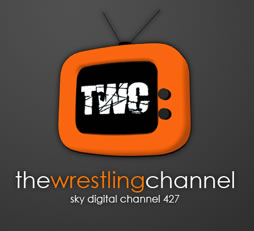 The intention is that this new programming will start with Birthdays and then open up into other anniversary days to help it fit its ongoing remit ‘as your big day tv’ and it’ll also put the content on the Web for further targeted enjoyment. Merry Christmas TV and Happy New Year TV are already in planning.
The intention is that this new programming will start with Birthdays and then open up into other anniversary days to help it fit its ongoing remit ‘as your big day tv’ and it’ll also put the content on the Web for further targeted enjoyment. Merry Christmas TV and Happy New Year TV are already in planning. BirthdayTV prices start at the pretty reasonable level of £30 for 15 seconds, with a minute coming it at £100. Booking is via an online form, with video being sent in by post, at least ten days before broadcast.
BirthdayTV prices start at the pretty reasonable level of £30 for 15 seconds, with a minute coming it at £100. Booking is via an online form, with video being sent in by post, at least ten days before broadcast.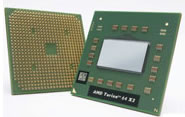 AMD, the second largest microprocessor manufacturer has complete the purchase of graphics, chipset and CE specialist ATi Technologies in a deal worth around $5.4Bn.
AMD, the second largest microprocessor manufacturer has complete the purchase of graphics, chipset and CE specialist ATi Technologies in a deal worth around $5.4Bn. The capabilities of graphics processors have been gathering pace over the recent years to the point where they come close to rivaling the main processor themselves.
The capabilities of graphics processors have been gathering pace over the recent years to the point where they come close to rivaling the main processor themselves.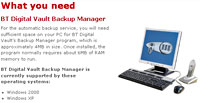 BT has launched a ‘virtual vault’ offering a secure online location for broadband users to safely stash personal files.
BT has launched a ‘virtual vault’ offering a secure online location for broadband users to safely stash personal files. The manager then synchronises the data with the copy stored in the Digital Vault, with no user intervention needed.
The manager then synchronises the data with the copy stored in the Digital Vault, with no user intervention needed. Cellular phone provider T-Mobile US is offering a service, HotSpot @Home, giving unlimited calls to US phones via WiFi. This in itself isn’t big news, but what is significant is that callers leaving the range of the WiFi will automatically switch to their cellular service. Initial roll-out is limited to Seattle.
Cellular phone provider T-Mobile US is offering a service, HotSpot @Home, giving unlimited calls to US phones via WiFi. This in itself isn’t big news, but what is significant is that callers leaving the range of the WiFi will automatically switch to their cellular service. Initial roll-out is limited to Seattle.
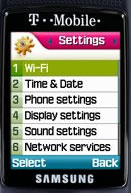 T-Mobile is the mobile communications subsidiary of Deutsche Telekom, the German telco incumbent.
T-Mobile is the mobile communications subsidiary of Deutsche Telekom, the German telco incumbent.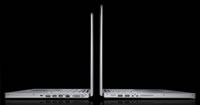 Apple has updated its whole MacBook Pro range of laptops to run Intel’s Core 2 Duo range of processors. They claim a 39% speed improvement.
Apple has updated its whole MacBook Pro range of laptops to run Intel’s Core 2 Duo range of processors. They claim a 39% speed improvement. Those keen little things, who shelled out for them, might be a little down in the mouth to find a new, even whizzier version coming out.
Those keen little things, who shelled out for them, might be a little down in the mouth to find a new, even whizzier version coming out. Pricing
Pricing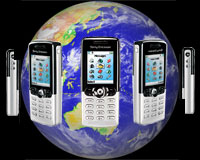 Global mobile shipments are set to hit one billion this year for the first time.
Global mobile shipments are set to hit one billion this year for the first time.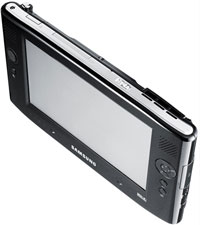 With ne’er a parp on their usual raucous PR trumpet, Samsung have quietly shuffled out two updates to its Q1 ultra mobile Origami PC range.
With ne’er a parp on their usual raucous PR trumpet, Samsung have quietly shuffled out two updates to its Q1 ultra mobile Origami PC range.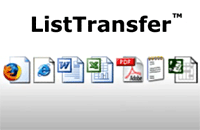 Weighing 1.7 pounds, it’s light enough to carry around for a few hours which is a good thing because that’s when the battery will conk out (battery life is measured at a rather disappointing three hours.)
Weighing 1.7 pounds, it’s light enough to carry around for a few hours which is a good thing because that’s when the battery will conk out (battery life is measured at a rather disappointing three hours.)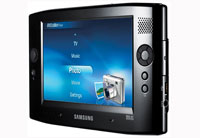 The other new model – the Q1b – uses a cheaper Via Technologies’ C7 1GHz processor, and is fitted with a 40 GB hard disk and 512 MB RAM.
The other new model – the Q1b – uses a cheaper Via Technologies’ C7 1GHz processor, and is fitted with a 40 GB hard disk and 512 MB RAM.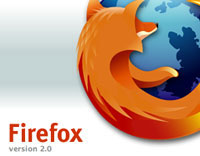 The final version of the Firefox 2.0 browser is expected to be released into the wild today.
The final version of the Firefox 2.0 browser is expected to be released into the wild today.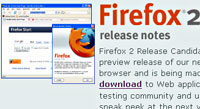 “If your browser needs a restart or the OS asks you to reboot, losing all of those web pages and content is pretty disruptive,” commented Mozilla VP of products Christopher Beard. Ain’t that the truth, Chris!
“If your browser needs a restart or the OS asks you to reboot, losing all of those web pages and content is pretty disruptive,” commented Mozilla VP of products Christopher Beard. Ain’t that the truth, Chris!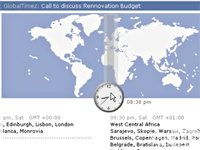 Set for a beta launch this month, Scrybe looks to be a ground-breaking online organiser if it lives up to the claims made in the promotional video posted on YouTube.
Set for a beta launch this month, Scrybe looks to be a ground-breaking online organiser if it lives up to the claims made in the promotional video posted on YouTube. Web snippets – complete with bookmarks, graphics and text formatting – can be copied into a categorised Thought Pad interface and integrated with calendar events and To Dos, with multi page documents browsed via a sleek, pop up graphic navigation pane.
Web snippets – complete with bookmarks, graphics and text formatting – can be copied into a categorised Thought Pad interface and integrated with calendar events and To Dos, with multi page documents browsed via a sleek, pop up graphic navigation pane.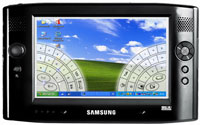 What we think so far
What we think so far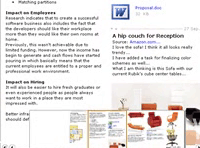 Although the online demo looks amazing, we’ve seen far too many slick presentations be followed up by a hideous kludge of a program, so we’ve signed up to the beta trial and will hopefully be able to give you our hands-on verdict soon.
Although the online demo looks amazing, we’ve seen far too many slick presentations be followed up by a hideous kludge of a program, so we’ve signed up to the beta trial and will hopefully be able to give you our hands-on verdict soon.